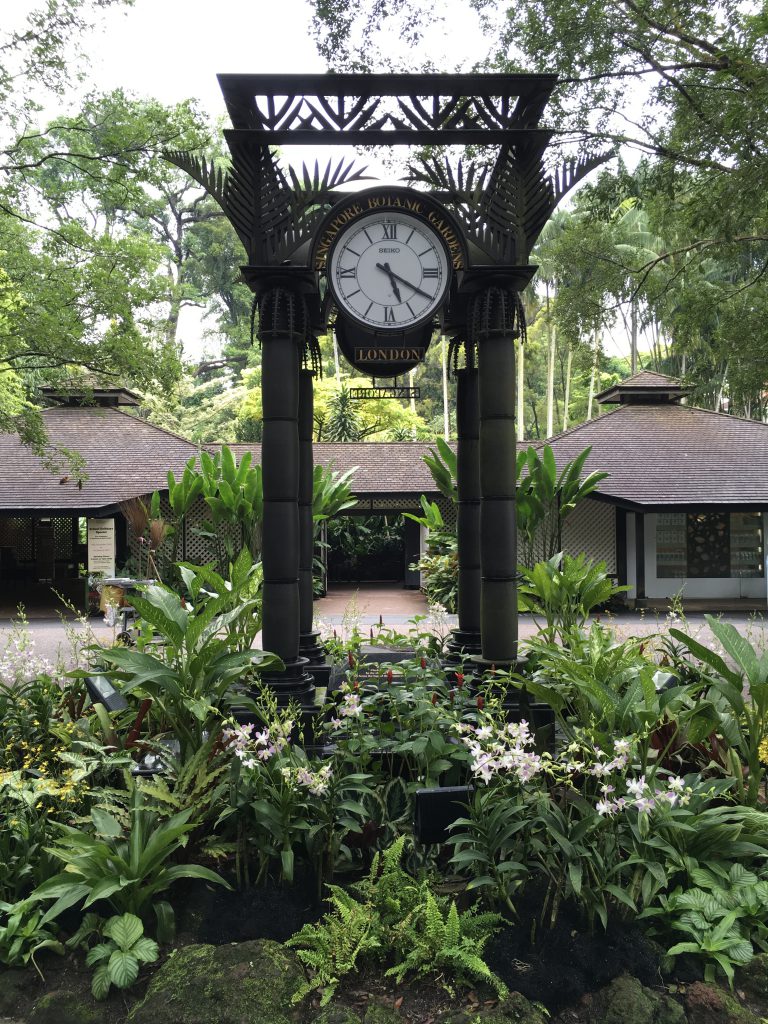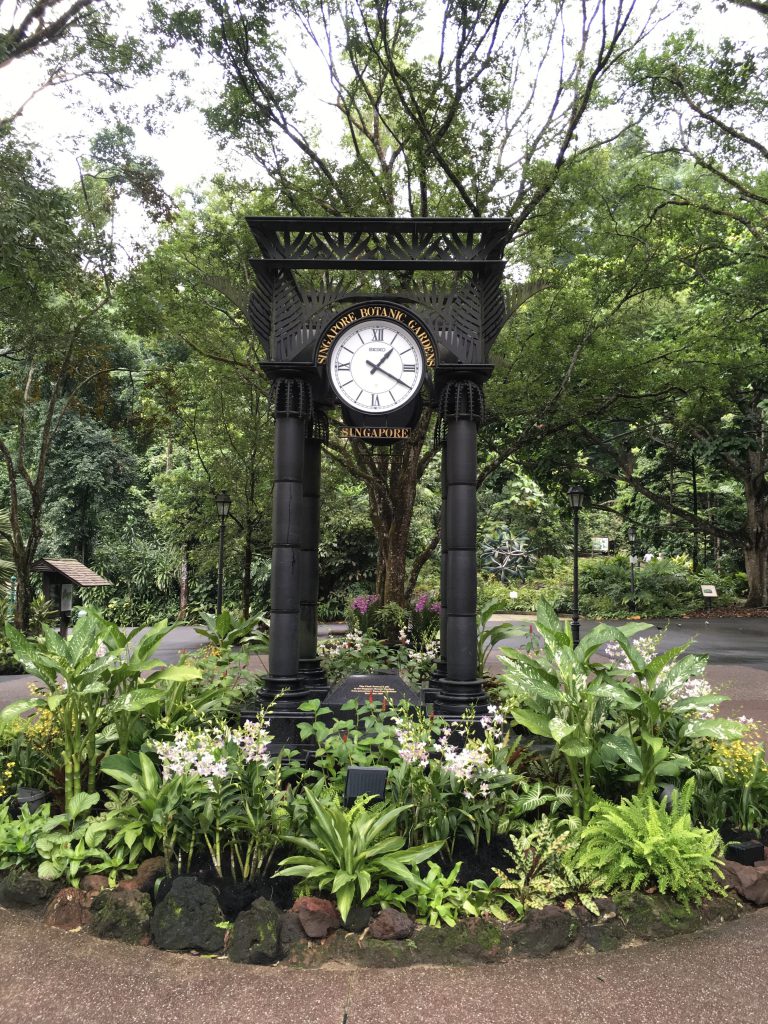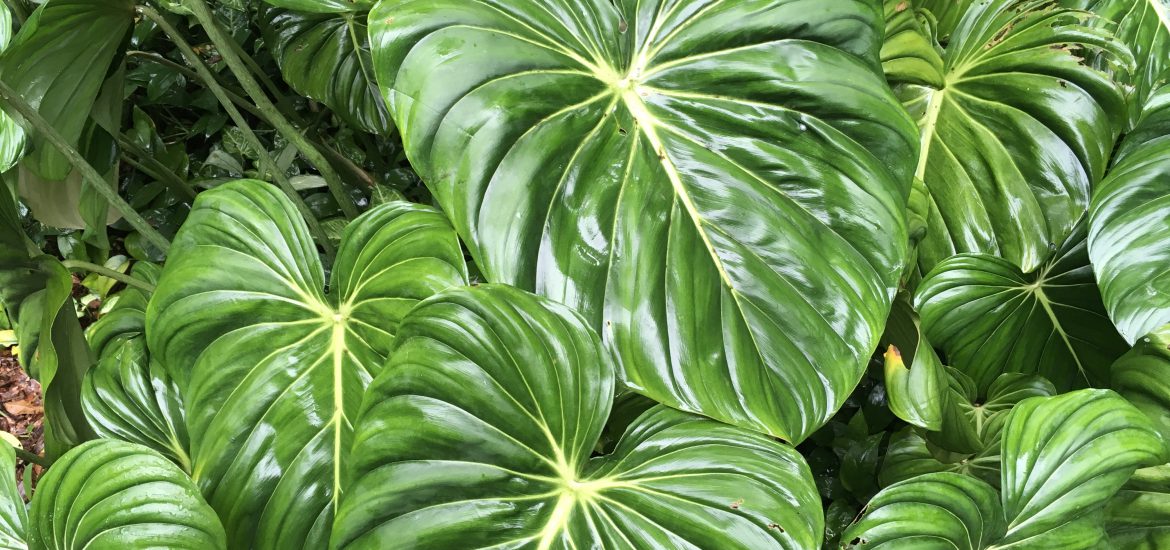A walk on the not-so-wild side.
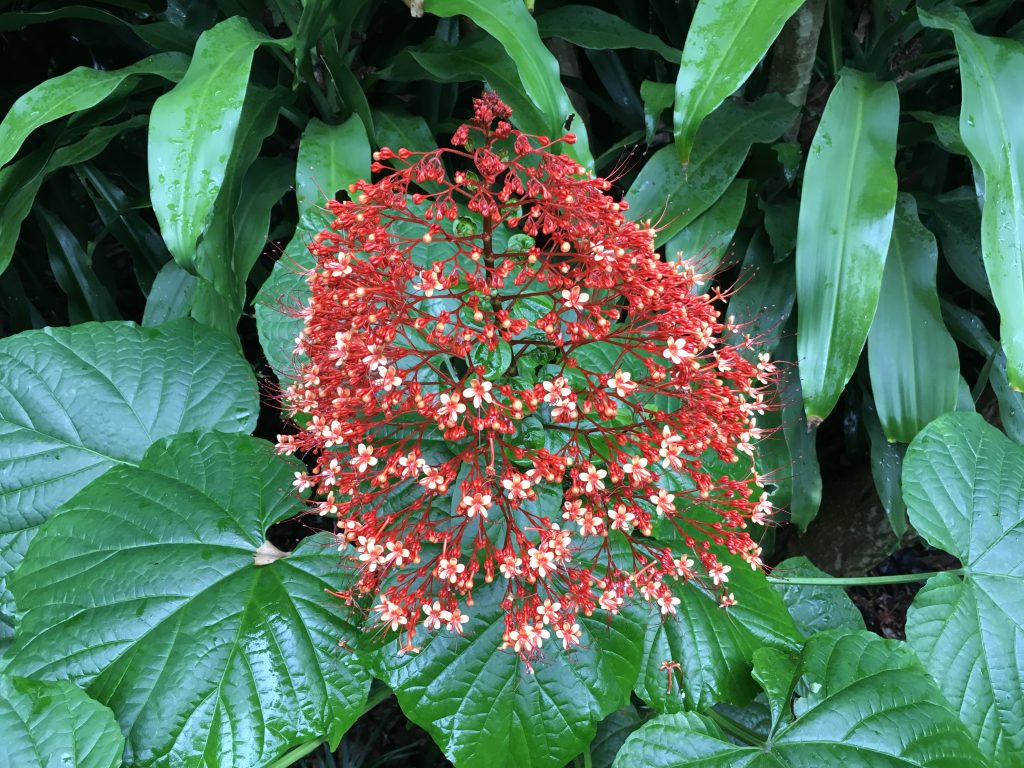
I have been meaning to write this post for a very long time. It was November when I visited the Singapore Botanic Gardens and now it is December. I sometimes wonder if I should live in an airport lounge as only here can I find a bit of time that is not taken up by the everyday things I need to do to keep home, family, church and social life in order.
Since the last post there have been a couple of nice dinners with friends, two big Sunday lunches with our extended family, trying out of new recipes and even a bit of Christmas shopping.
For the first time ever, I have managed to get our Christmas cards signed by every member of the family. No mean feat as Junior 1 and Junior 3 now live away from London.
Mr Gochugaru and I are on our way to Seoul and I am concerned that I should first write about the gardens before writing about our current trip.
The reason for my visit was to do some research for a talk I will be giving to a local gardening club. By happy coincidence I mentioned this to Accounting Friend who connected me to the Director of the SBG, Dr Nigel Taylor. Dr Taylor kindly offered to show me round the gardens and to point out some interesting plants and features.
On the day of our meeting, the heavens decided to generously pour down its collected rainwater all at once. The taxi driver must have wondered why I would want to go to the gardens on such a day, so I said to him, as I was settling my fare: do you see that man in the red t-shirt over there? He is the Director of the Gardens and I am here to meet him.
The impression I wanted to give was that this was such an event that one should not complain even if one got soaked to the bone.
It was a very special morning as after giving me a potted (and maybe even unpotted, if you see what I mean) history of the SBG, we went round in a golf buggy for a tour of the extensive gardens.
There will be a talk on this so for now, with time pressing on, I am going to feature some photos with brief explanations. A fuller history of the beginnings, development and future of the gardens will be in separate post. One point to mention now is that SBG is Singapore’s first UNESCO Heritage Site.
The Red Sealing-Wax Palm or Lipstick Palm (cyrtostachys renda) is the symbol of the Singapore Botanic Gardens and is featured on its logo. The plant is not used in the production of sealing wax or lipstick but is so called because of the bright red colour of its crownshafts and leaf sheaths
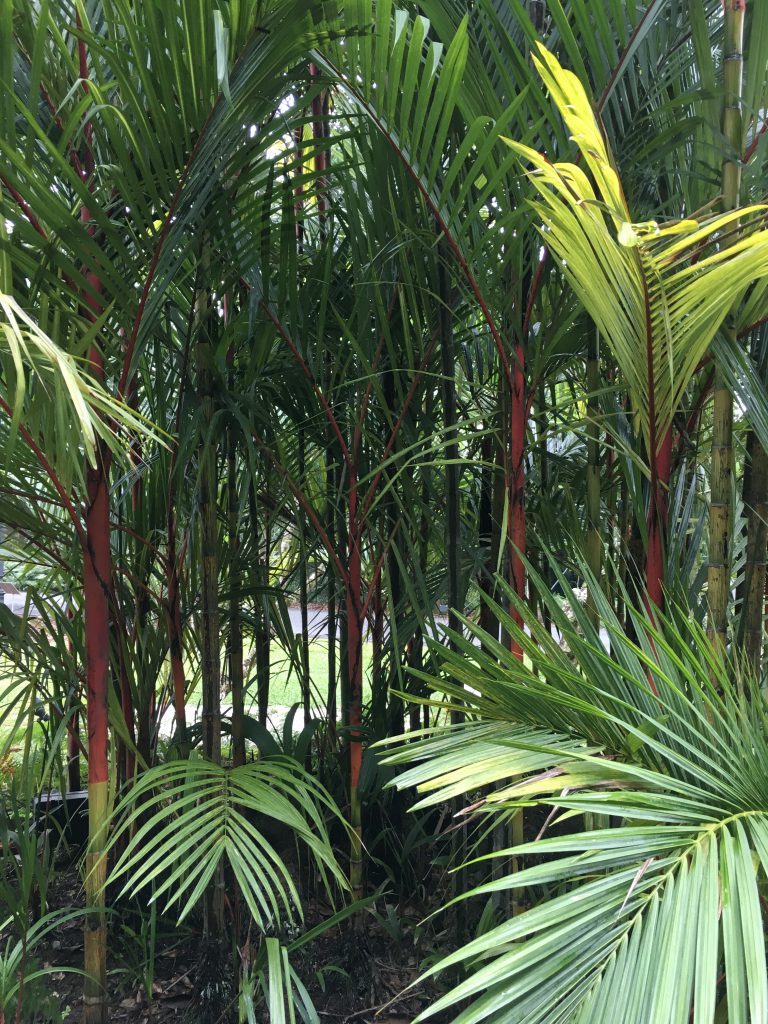
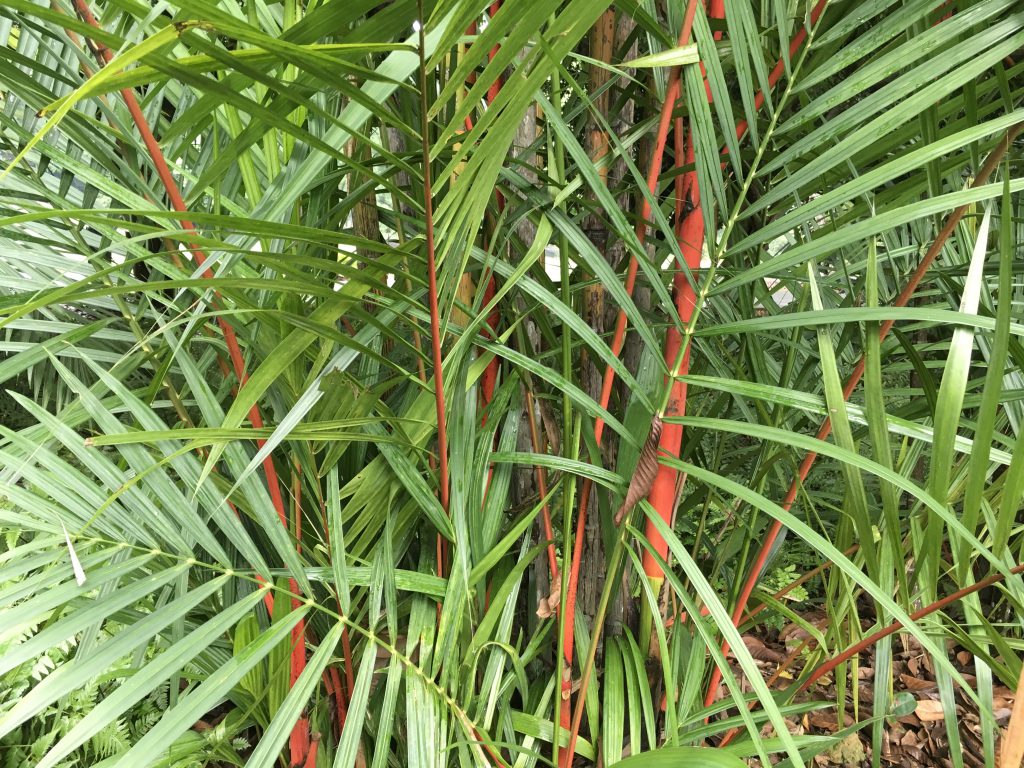

Orchids are a big industry in Singapore and the national collection is housed within the Botanic Gardens
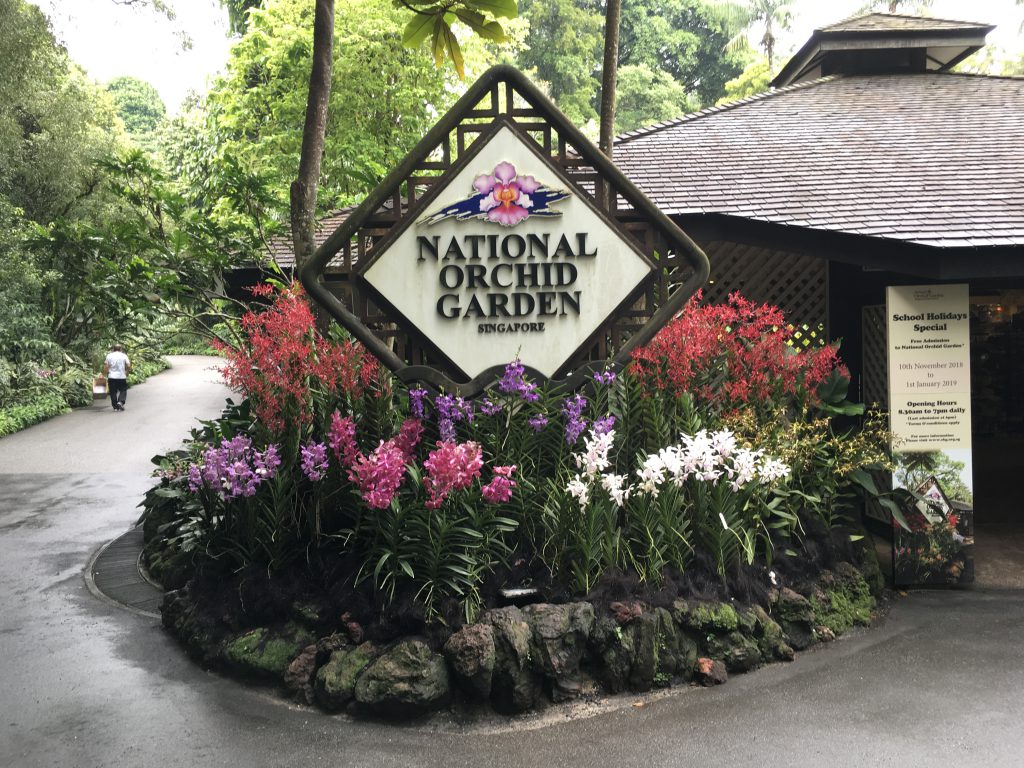

The Cannonball Tree (couroupita guianensis) belongs to the same family as the Brazil nut but its heavy and large fuits can grow up to 10 inches in diameter hence its common name

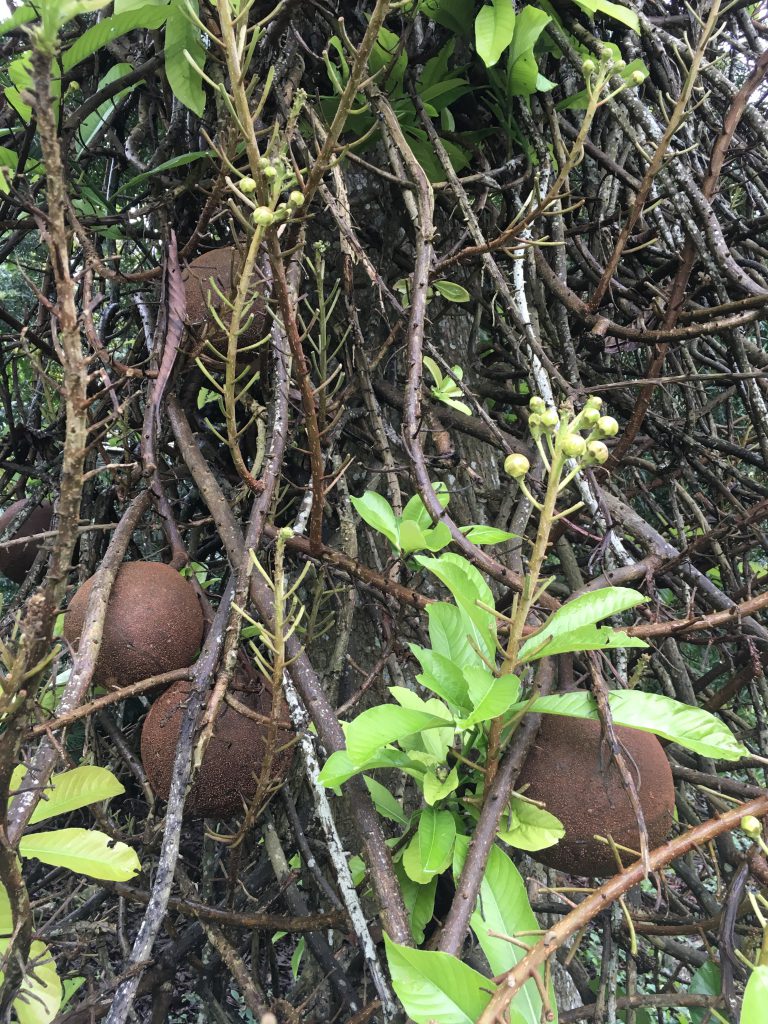
The gardens are planted in the informal English Landscape Movement style, however there is an anomaly in the Sundial Garden which is laid out in a formal and symmetrical style
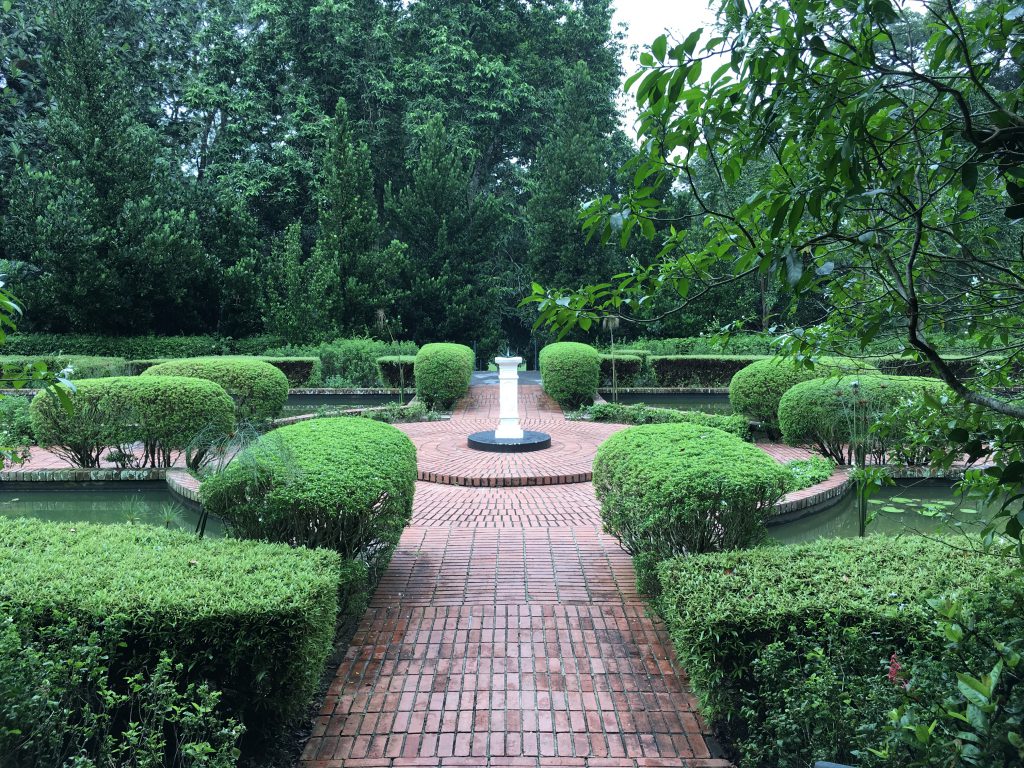
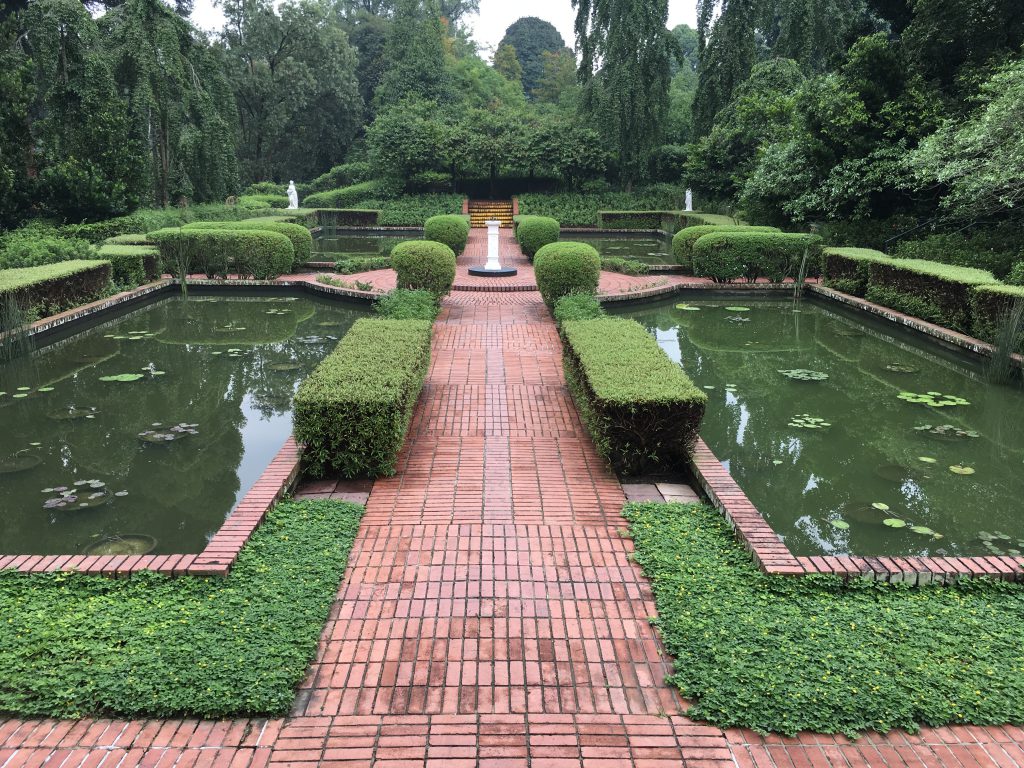
The Heritage Museum is housed in a historic building and well worth a visit as it contains interesting background information on the gardens
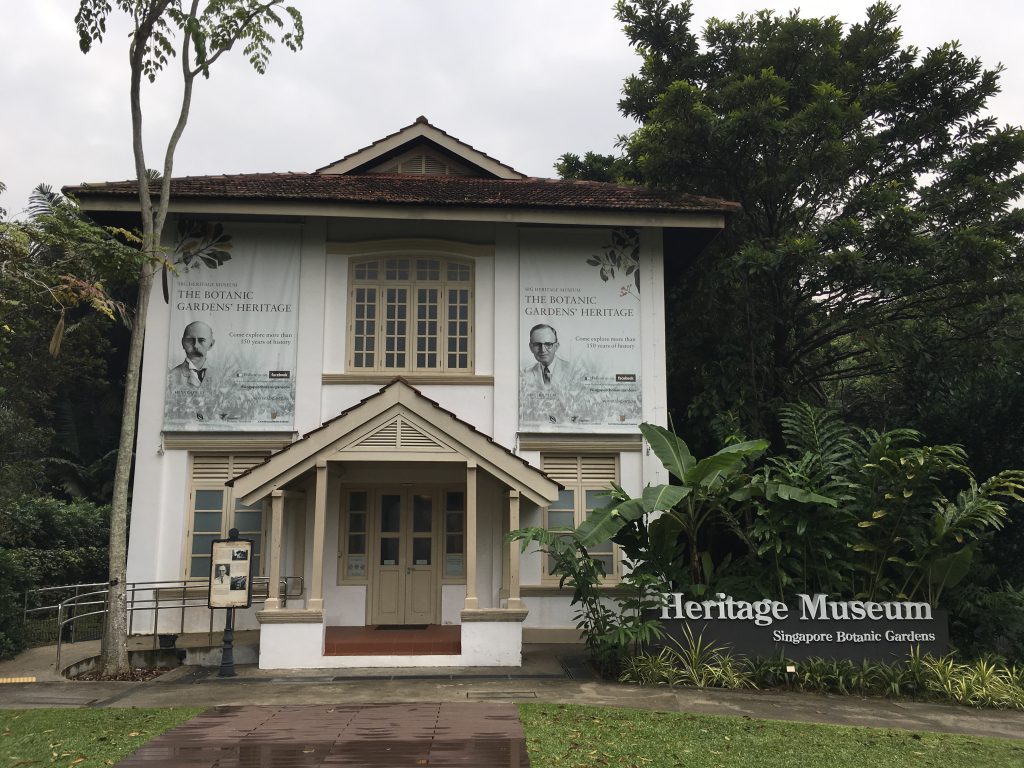
EJH Corner was the Assistant Director of the gardens from 1929 to 1945 and lived in this house, which is now home to Corner House restaurant. Yes, it is on my Singapore eating out list
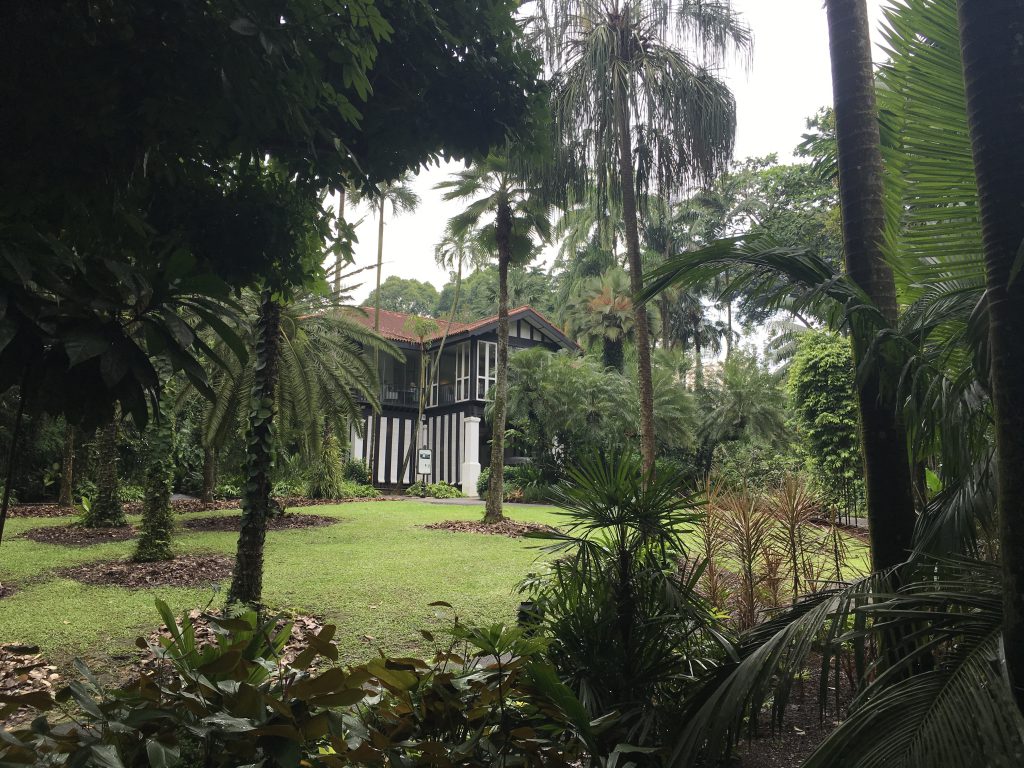
If life gives you lemons, make lemonade. If life gives you long aerial roots, why not make a curtain of roots? This path is protected by Curtain Ivy or Princess Vine (cissus verticillata) roots
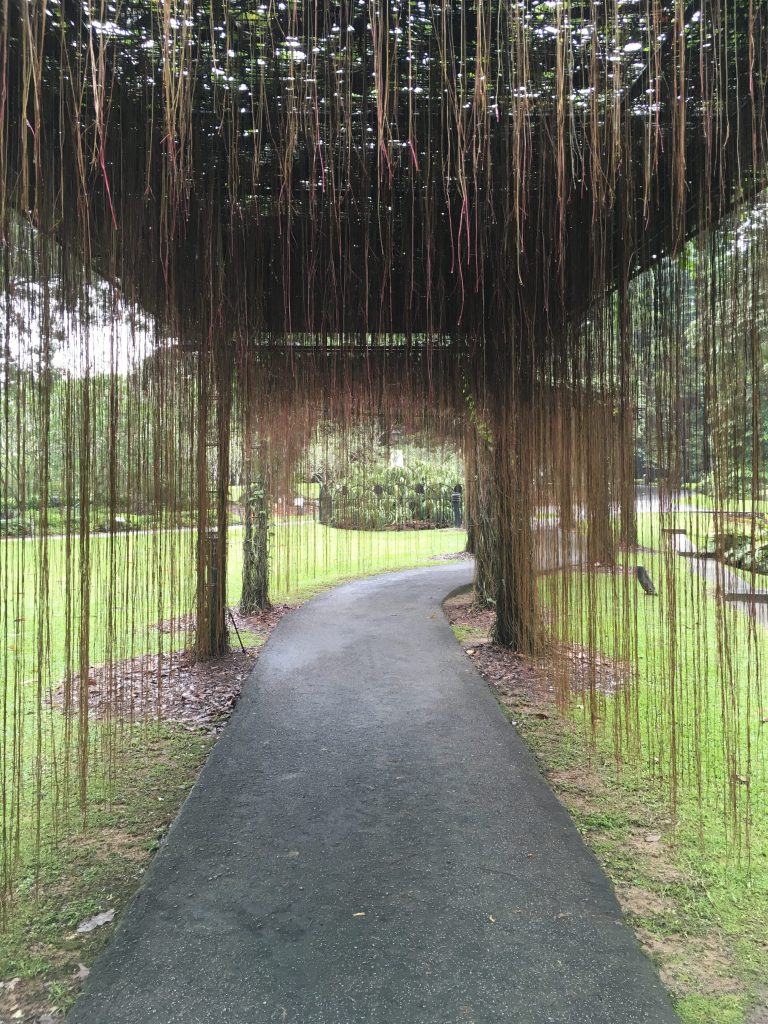


The time in London? Singapore? Tropical gardens are a distant memory as I head to a very cold Seoul. I will write more about the background to the gardens in a separate post as it is time to board the plane
